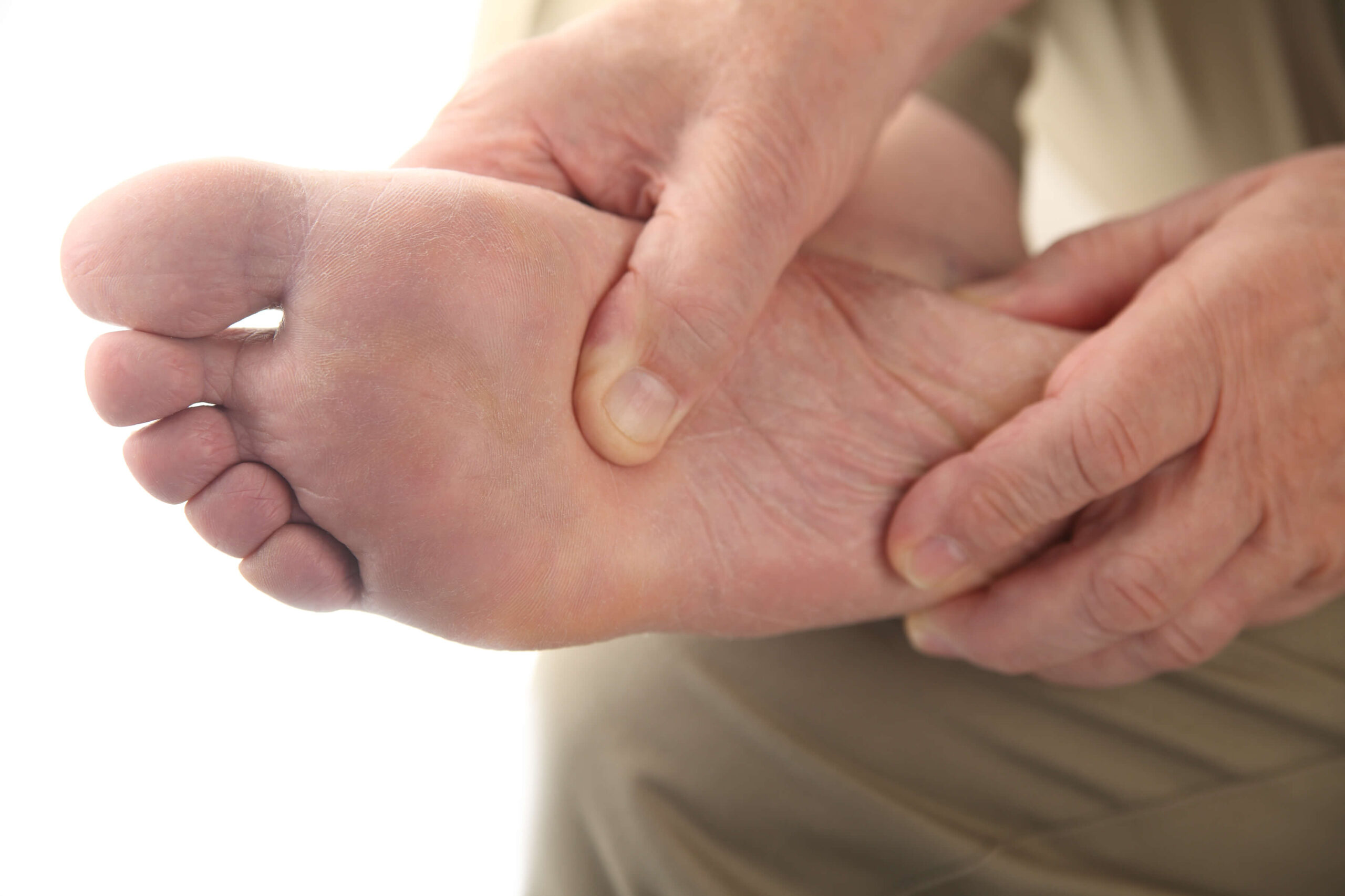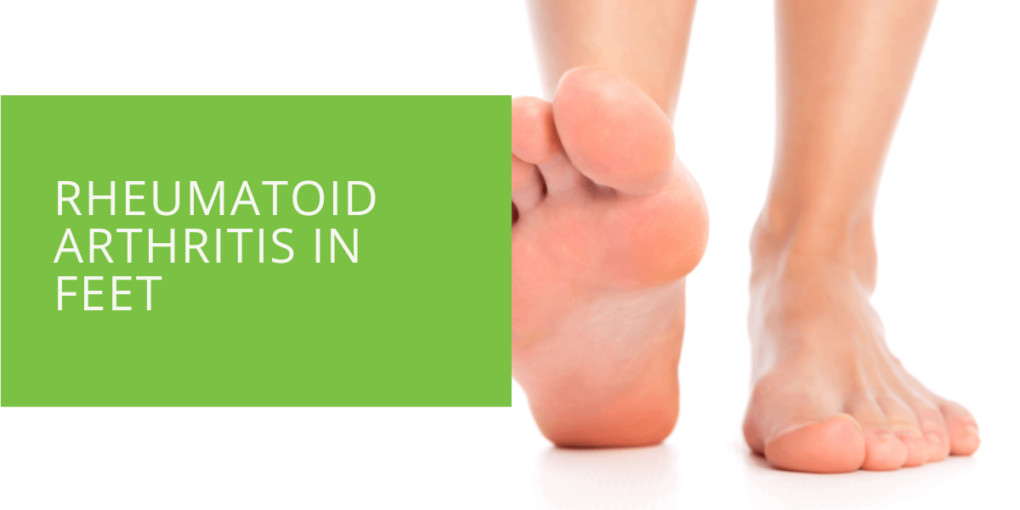Rheumatoid Arthritis in Feet: Symptoms, Causes & Treatment Options
Rheumatoid Arthritis (RA) is a chronic autoimmune disorder that affects the joints, causing inflammation and pain. One of the most common areas RA affects is the feet, which can cause severe pain, stiffness, and difficulty walking. This article will discuss the symptoms, causes, and treatment options for rheumatoid arthritis in the feet.
What is Rheumatoid Arthritis?
Rheumatoid Arthritis is a chronic autoimmune disorder that causes inflammation and joint pain. The exact cause of RA is unknown, but it is believed to be a combination of genetic and environmental factors. RA is a systemic disease affecting the whole body, not just the joints. People with RA have an overactive immune system that attacks the lining of the joints, causing inflammation and damage. This inflammation can destroy cartilage, the tissue that cushions the joints and allows them to move smoothly.

Symptoms of Rheumatoid Arthritis in the Feet
The symptoms of RA in the feet can vary from person to person, but some common symptoms include the following:
- Pain and stiffness in the feet and toes.
- Swelling and inflammation in the joints, particularly in the ankle and big toe.
- Redness and warmth in the affected area.
- Loss of range of motion and difficulty walking.
- Rheumatoid nodules, small, round lumps that can form under the skin near the affected joints
The pain and inflammation caused by RA can also lead to deformities in the feet, such as the formation of a bunion or hammertoe. This can cause problems fitting into shoes and lead to calluses and other foot and ankle problems.
Causes of Rheumatoid Arthritis in the Feet
The exact cause of RA is unknown, but it is believed to be a combination of genetic and environmental factors. Some people may have a genetic predisposition to developing RA, while others may develop it due to exposure to certain environmental factors.
An autoimmune disorder is the main cause of RA. The immune system mistakenly attacks the lining of the joints, causing inflammation and damage.

Treatment Options for Rheumatoid Arthritis in the Feet
Treating RA in the feet typically involves a combination of medications, physical therapy, and assistive devices.
Medications
- Nonsteroidal anti-inflammatory drugs (NSAIDs) can help reduce pain and inflammation.
- Disease-modifying antirheumatic drugs (DMARDs) can slow the progression of RA and help prevent joint damage.
- Biologic drugs, a newer class of DMARDs, can target specific molecules involved in inflammation.
Physical Therapy and Exercise
Physical therapy can help improve the range of motion and strength of the feet. A physical therapist may also teach you exercises to help you manage your RA symptoms.
Assistive Devices
Orthotic devices, such as shoe inserts, can help redistribute weight and pressure on the feet and can help reduce foot pain and inflammation. Canes and crutches can help take the weight off the affected foot and can help you get around more easily.
Surgery
In some cases, surgery may be necessary to correct deformities in the feet caused by RA or to repair joint damage. A podiatrist or orthopedic surgeon may recommend surgery if conservative treatments are ineffective.

Living with Rheumatoid Arthritis in the Feet
RA is a chronic condition, and working with a team of healthcare professionals is important to manage your symptoms and prevent joint damage. A podiatrist, rheumatologist, and physical therapist can help you develop a treatment plan that is right for you.
Taking care of yourself and maintaining a healthy lifestyle is also important. Eating a well-balanced diet, getting enough rest, and not smoking can help manage RA symptoms.
It is also important to take care of your feet. Wearing comfortable shoes that fit well and provide good support can help to reduce pain and inflammation. Avoiding high heels and shoes that are tight or constricting can also help. It is also important to keep your feet clean and dry and to check them regularly for any signs of infection or injury.
In addition to these self-care measures, there are other things you can do to manage RA symptoms and improve your quality of life. Joining a support group, for example, can be a great way to connect with other people who understand what you're going through. You can also try complementary therapies, such as acupuncture or yoga, to help manage foot pain and improve mobility.

Managing Rheumatoid Arthritis in Feet: Tips and Tricks
Living with rheumatoid arthritis (RA) in the feet can be challenging and cause many foot problems, but there are many ways to manage the symptoms and improve your overall quality of life. Here are a few tips and tricks to keep in mind:
- Reduce inflammation: Inflammation is a major contributor to pain and joint damage in RA. To reduce inflammation, try incorporating anti-inflammatory foods into your diet, such as fish, nuts, fruits and vegetables. Additionally, over-the-counter anti-inflammatory medications can help to reduce pain and inflammation.
- Manage pain: Pain can be a constant companion for people with RA in the feet. To manage pain, try using heat and cold therapy, such as a heating pad or a cold pack. You can also talk to your doctor about prescription pain medications.
- Prevent joint damage: RA can cause joint damage over time, leading to deformities and disability. To prevent joint damage, keeping your feet moving as much as possible is important. Gentle exercises such as walking and swimming can help to keep your joints moving and prevent stiffness.
- Physical therapy: Physical therapy can help manage RA in the feet. A physical therapist can teach you exercises to help improve your range of motion and strength, which can help to reduce pain and inflammation.
- Orthotics: Orthotics can also help manage RA in the feet. An orthotic device can be placed in your shoe to help support your foot and ankle. It can help to reduce pain and prevent further joint damage.
- Regular foot care: Regular foot care is important for people with RA in the feet. This includes keeping your feet clean and dry and checking your feet regularly for signs of infection or other problems.
- Communicate with your doctor: Be sure to communicate with your doctor about any problems you are experiencing. They can help you develop an individualized treatment plan tailored to your specific needs.
By incorporating these tips and tricks into your daily life, you can help to manage your RA in the feet and improve your overall quality of life. Remember, working closely with your doctor and other healthcare providers is important to find the best treatment plan for you.
Conclusion
Rheumatoid arthritis in the feet can cause severe pain and difficulty walking. It is a chronic autoimmune disorder that affects the joints, causing inflammation and pain. The symptoms, causes, and treatment options for RA in the feet can vary from person to person, but it typically involves a combination of medications, physical therapy, and assistive devices. Foot surgery may be necessary in some cases.
Living with RA in the feet requires a team of healthcare professionals to manage your symptoms and prevent joint damage. It is also important to take care of yourself, maintain a healthy lifestyle and take care of your feet. With the right treatment and support, people with RA can improve their quality of life and continue to lead active, fulfilling lives.
FAQ
Does rheumatoid arthritis cause tingling in feet?
Yes, rheumatoid arthritis can cause tingling or a burning sensation in the feet. This is due to the inflammation and pressure on the nerves in the joints due to RA. The inflammation and pressure on the nerves can cause a sensation of tingling or burning in the feet, making walking or standing difficult. This is one of the common symptoms of RA in the feet.
Can rheumatoid arthritis start in your feet?
Yes, rheumatoid arthritis can start in the feet, although it is more commonly seen in the hands and then spreads to other joints. RA is a systemic disease affecting multiple joints, including the feet. In some cases, the symptoms of RA in the feet may appear before symptoms in other joints. This is called "oligoarticular onset, " meaning that the RA is initially limited to a few joints.
Can rheumatoid arthritis cause numbness in feet?
Yes, rheumatoid arthritis can cause numbness in the feet. This is due to the inflammation and pressure on the nerves in the joints caused by RA. This can also be a symptom of RA in the feet. The numbness can make it difficult to walk or stand for long periods. It can also make it difficult to feel the ground beneath your feet, increasing the risk of falling.
How does rheumatoid arthritis affect the feet?
Rheumatoid arthritis affects the feet by causing inflammation in the joints, leading to foot pain, stiffness, and difficulty walking. It can also lead to joint damage and deformity if left untreated. The inflammation can cause the cartilage in the joints to wear down, leading to pain, stiffness, and difficulty moving the affected joint. RA can also cause the bones to change shape, leading to deformities such as bunions or hammertoes. This can make it difficult to walk or wear shoes.
What causes rheumatoid arthritis in feet?
The exact cause of rheumatoid arthritis is unknown, but it is believed to be an autoimmune disorder where the immune system mistakenly attacks the joints. Risk factors include a family history of RA, smoking, and exposure to certain toxins. Other factors that may increase the risk of RA in the feet include genetic predisposition, age, gender, and certain viral or bacterial infections.

